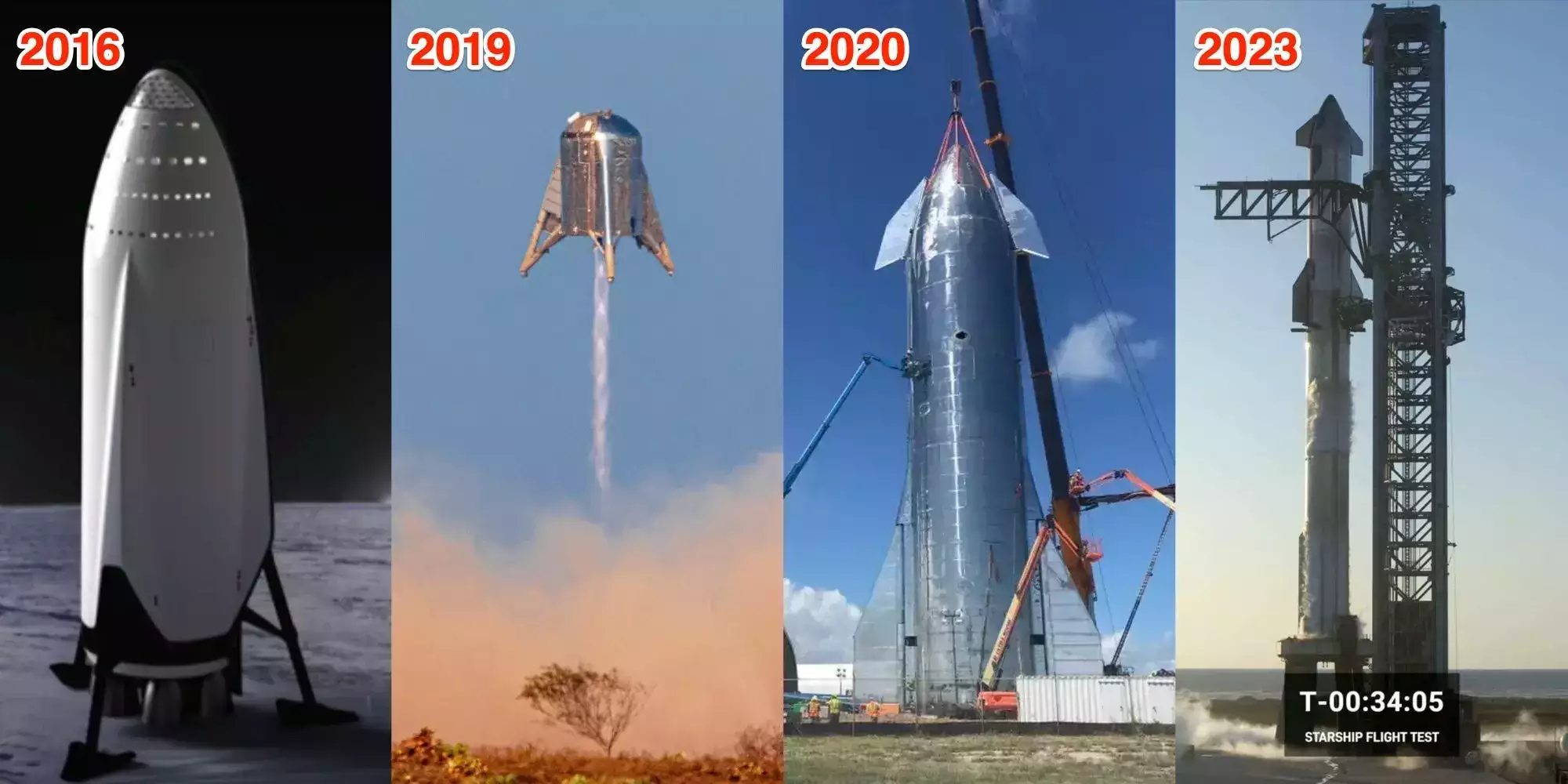Elon Musk is anticipating another launch of SpaceX’s Starship mega-rocket, following its previous explosion during its first attempt to reach orbit. If successful, Starship has the potential to become the most powerful rocket currently in operation, marking a major achievement after more than a decade of development. Musk first introduced the concept of Starship, then known as the Mars Colony Transporter, in 2012. The evolution of the launch system, from its early iterations to its current form, can be seen in a series of pictures.
Starship is a cutting-edge spacecraft designed to be stacked on top of a towering Super Heavy booster, creating the first fully reusable launch system. It is expected to have the capability to carry more cargo to Earth’s orbit, the moon, and Mars than any previous rocket. However, before it can demonstrate its capabilities, Starship must prove that it can reach orbit successfully. Its initial attempt in April resulted in a failure to separate from the Super Heavy booster, causing the rocket to tumble and ultimately explode. This setback was not the first for Starship, as there have been multiple explosions throughout the years.
The first design for what would eventually become Starship was revealed in 2016 under the name “Interplanetary Space Transporter.” Musk described the system as providing the freedom to travel anywhere in the solar system. The design featured a carbon fiber hull and expandable legs for landing. In 2017, the rocket began to resemble its current form and was named BFR (Big Falcon Rocket), although there were reports that the acronym originally stood for “Big Fucking Rocket.” The landing legs were replaced by arrow-like fins, and the rocket was planned to be made of carbon fiber. However, this material choice would later change.
In 2019, the first Starship prototype, called Starhopper, tested the power of the Raptor engine developed for Starship. It successfully reached a height of 492 feet and landed back down. The following year, Musk unveiled the first official Starship prototype, made of steel instead of carbon fiber. This change was driven by cost considerations, as steel is significantly cheaper than carbon fiber. The Mk1 Starship, as it was called, burst apart during a pressure test and did not achieve its intended flight.
Subsequent prototypes, such as Starship SN8 and SN15, showed significant progress. SN8 soared 7.8 miles into the air before exploding during landing, while SN15 successfully landed back on the launch pad. These successes paved the way for the next step: launching Starship atop its Super Heavy booster. However, the first fully integrated flight test in April 2023 encountered problems when the booster failed to separate from the spaceship, causing the rocket to tumble out of control and explode mid-air. The launchpad also sustained significant damage from the rocket’s engines, resulting in debris being scattered over a nearby town.
Despite these setbacks, Musk remains determined to continue testing and improving Starship. SpaceX has made over 1,000 changes to the rocket design since its last flight, with the introduction of a vent between the spaceship and the booster being the most noticeable. Engineers have also developed a risky maneuver to prevent a repeat of the explosive failure, involving firing up the spaceship’s own engines while still being pushed by the booster. Musk is eager to launch again, but regulatory approval has been a hurdle.

I have over 10 years of experience in the cryptocurrency industry and I have been on the list of the top authors on LinkedIn for the past 5 years.

